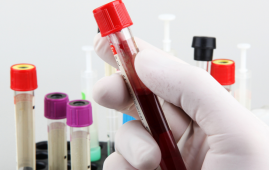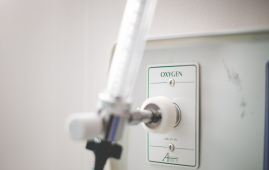

By providing clinicians with a sharper image of suspected tumors during the biopsy, a cutting-edge imaging technique is demonstrating promise as a tool to enhance prostate cancer diagnosis.
The PSMA-PET/CT scanning technique has been put to the test in a study at the University Hospital Bonn in Germany to see if it might help determine where to take biopsy samples.
According to preliminary findings, using extra scans in addition to standard imaging methods may enable doctors to make better choices regarding the course of treatment moving forward.
When PSMA-PET/CT was used, doctors altered how they might treat a patient with clinically relevant prostate cancer in 19% more instances than when they used the conventional scans alone.
Also, a considerable increase in clinically relevant prostate tumors was found thanks to the approach.
The findings are presented today at the European Association of Urology Annual Congress in Milan.
“The normal standard of care, which is an MRI scan and then a biopsy, is already good at detecting of prostate cancer, but we wanted to see if PSMA-PET/CT could offer additional information to help with treatment plans,” said Dr. Philipp Krausewitz, a urologist at University Hospital Bonn who led the study. “It appears to be having an impact in high-risk patients, but we also saw false positives in 6% of patients which meant we needed further investigations. The question we are considering is whether the additional diagnostics are worthwhile.”
Since March 2021, the DEPROMP experiment, also known as the study, has enrolled about 200 men. By the time the trial is over, the researchers hope to have 230 individuals enrolled. Data from 219 men who had MRI, PSMA-PET/CT, and biopsy were used in the preliminary findings.
Two different teams of urologists then randomly examined their scans; one team was given the results from the MRI, PSMA-PET/CT, and biopsy, whereas the other team received the results without the PSMA-PET/CT data. The researchers then contrasted the treatment decisions made by the two teams in light of the available data.
For instance, the doctors might decide to operate to remove the malignancy or provide chemotherapy to the patient.
But it is not yet clear how these decisions might ultimately affect patient outcomes as it can take years and even decades for cancer to return if treated correctly.
“We are seeing a change in cancer detection and management plans in these early results, but we have to wait to see if the final results reflect this,” said Dr. Krausewitz. “PSMA-PET/CT is not yet available everywhere as it is expensive, so it is important we understand how it can be effectively used.”
With health care systems already under financial strain, the technique will need to offer a substantial improvement in diagnostic capability to be cost effective, added Jochen Walz, associate professor of Urology at the Institut Paoli-Calmettes Cancer Centre in Marseille, France, who commented on the research on behalf of the EAU.
He said, “In the meantime, PSMA-PET/CT could be considered a solution for selected challenging diagnostic cases or those where MRI cannot be done.”
more recommended stories
 New Blood Cancer Model Unveils Drug Resistance
New Blood Cancer Model Unveils Drug ResistanceNew Lab Model Reveals Gene Mutation.
 Osteoarthritis Genetics Study Uncovers New Treatment Hope
Osteoarthritis Genetics Study Uncovers New Treatment HopeOsteoarthritis- the world’s leading cause of.
 Antibody Breakthrough in Whooping Cough Vaccine
Antibody Breakthrough in Whooping Cough VaccineWhooping cough vaccine development is entering.
 Scientists Unveil Next-Gen Eye-Tracking with Unmatched Precision
Scientists Unveil Next-Gen Eye-Tracking with Unmatched PrecisionEye-tracking technology has long been a.
 Men5CV: Hope for Ending Africa’s Meningitis Epidemics
Men5CV: Hope for Ending Africa’s Meningitis EpidemicsA landmark global health study led.
 Stem Cell Therapy Shows 92% Success in Corneal Repair
Stem Cell Therapy Shows 92% Success in Corneal RepairA groundbreaking stem cell therapy known.
 Gene Therapy for Maple Syrup Urine Disease
Gene Therapy for Maple Syrup Urine DiseaseResearchers at UMass Chan Medical School.
 How Fast Are Your Organs Aging? Simple Blood Test May Tell
How Fast Are Your Organs Aging? Simple Blood Test May TellNew research from University College London.
 HEALEY Platform Accelerates ALS Therapy Research
HEALEY Platform Accelerates ALS Therapy ResearchA New Era of ALS Clinical.
 Low-Oxygen Therapy in a HypoxyStat Pill? Scientists Say It’s Possible
Low-Oxygen Therapy in a HypoxyStat Pill? Scientists Say It’s PossibleA New Approach to Oxygen Regulation-HypoxyStat.

Leave a Comment